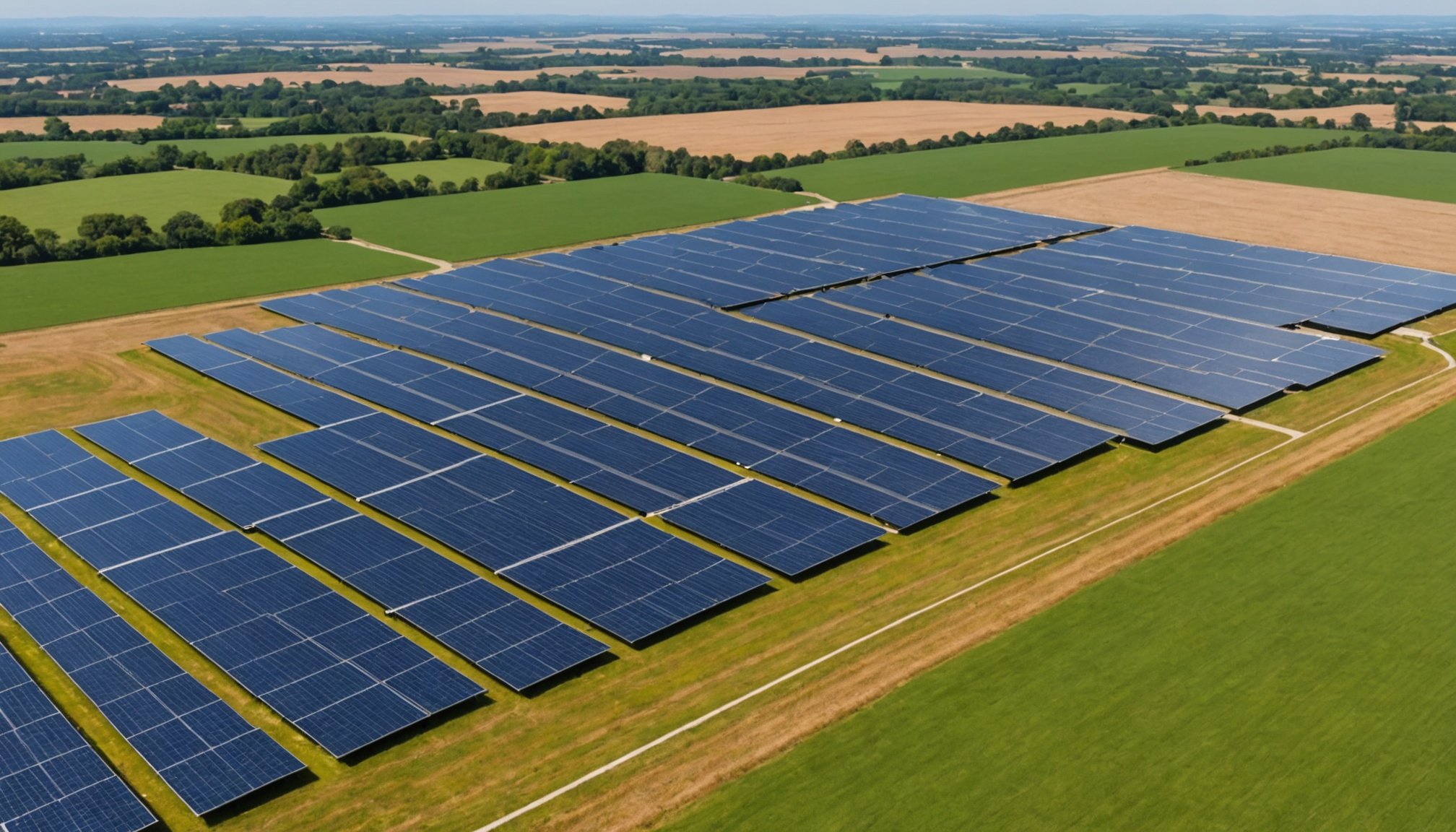Overview of Solar Panel Technology Innovations
Solar panel advancements have significantly reshaped the landscape of renewable energy solutions. Understanding how these technologies have evolved helps highlight the constant innovation in this field, especially in terms of efficiency metrics. As solar technology progresses, so too does its capacity to reduce costs and enhance energy production effectiveness.
Solar panels have shifted from basic models to more sophisticated structures that harness the sun’s energy more efficiently. With ongoing innovations, the efficiency metrics of solar panels continue to improve, enabling higher energy yields from the same surface area. Renewable energy solutions are becoming increasingly viable as a result, further solidifying solar power as a cornerstone of sustainable energy. Recent trends focus on enhancing these metrics, driving the industry toward even greater cost-effectiveness and accessibility.
In the same genre : Revolutionizing coastal pollution monitoring: unveiling advanced ai solutions for real-time tracking
Moreover, these advancements underscore a broader commitment to meeting global energy needs sustainably. As the demand for clean energy rises, the solar sector’s developmental strides in renewable energy solutions become crucial. By constantly innovating, the industry not only cuts costs but also fosters an energy-efficient future that meets societal demands.
Cutting-Edge Innovations in Solar Panel Design
In recent years, solar panel design innovations have taken centre stage in the renewable energy sector, pushing the boundaries of energy efficiency and sustainability. One notable advancement is the development of bifacial solar panels, which capture sunlight on both sides of the panel, boosting energy yields without increasing installation footprints. This innovation is particularly beneficial in optimizing energy production where space is at a premium.
Topic to read : Unveiling revolutionary smart contact lens technology: real-time health monitoring at your fingertips
Furthermore, the role of lightweight materials has been instrumental in enhancing solar panel efficiency. These materials not only reduce the panels’ overall weight but also maintain durability and reduce transportation and installation costs. By doing so, they make solar solutions more accessible and adaptable to various environments, from residential rooftops to large-scale solar farms.
Additionally, innovations in solar panel structure have focused on improving durability and output. The integration of cutting-edge materials and design techniques has resulted in panels that can withstand extreme weather conditions, prolonging their lifespan and ensuring consistent efficiency.
These advancements underscore a commitment to advancing solar panel technology, leading to a brighter future for renewable energy solutions. By embracing these innovations, the industry continues to move towards more cost-effective and versatile solar energy options.
Efficiency Enhancements through Technology
The quest for solar efficiency improvements remains pivotal in advancing renewable energy. Central to this pursuit is the evolution of energy conversion technology, where modern breakthroughs in photovoltaic advancements have significantly amplified solar panel capabilities. These developments focus on maximizing the energy harvested from sunlight, thereby achieving higher conversion rates that transcend previous limitations.
Advanced Photovoltaic Cells
Recent innovations in photovoltaic cells have ushered in more efficient energy conversion processes, such as the use of multi-junction cells. These cells stack multiple layers of different semiconductor materials, each capturing distinct parts of the solar spectrum. By utilizing more of the sun’s energy, these cells promise a leap in conversion efficiency, making solar energy more applicable across various scenarios.
Concentrated Solar Power Systems
Concentrated Solar Power (CSP) systems have brought forward robust solutions by employing mirrors or lenses to focus sunlight onto a small area. This approach generates intense heat used to produce electricity, offering a notable boost in efficiency. CSP systems excel in utility-scale applications, harnessing the sun’s energy in regions with abundant sunlight.
Integration with Energy Storage Systems
To fully harness these advancements, integrating solar technology with energy storage systems becomes essential. Reliable storage solutions ensure a steady energy supply, stabilizing the grid and increasing solar technology’s practicality. These integrations support consistent energy flow even during non-sunny periods, reinforcing the reliability of solar power.
Real-World Applications and Case Studies
Understanding the practical implications of new solar technologies is key in appreciating their potential. Through various solar project case studies, we can explore how advanced innovations have been successfully applied. These case studies highlight projects that leverage emerging solar innovations, showcasing significant improvements in performance metrics.
One compelling example is the deployment of bifacial solar panels in commercial settings. These installations demonstrate substantial increases in energy output by capturing sunlight from both sides. In environments with reflective surfaces, this technology has improved efficiency metrics by up to 20%.
Another case study involves the integration of energy storage systems with solar setups. Such configurations provide uninterrupted power supply and have been particularly successful in regions with variable weather patterns. This approach not only enhances energy reliability but also underscores the synergy between solar technologies and storage solutions.
Early adopters of these advanced technologies report considerable cost savings. By investing in innovative solutions, these users benefit from reduced energy bills and enhanced efficiency. By examining these real-world applications, the potential of current innovations becomes clear, offering a blueprint for future integration across various sectors.
Future Trends in Solar Energy Technology
As the solar industry continues to evolve, several emerging solar innovations are set to steer its future trajectory. Among these, the development of networked energy solutions stands out as a game-changer. These solutions aim to integrate solar energy systems with smart grids, enhancing energy distribution effectiveness and scalability. By enabling efficient energy sharing and management across vast networks, networked solutions promise significant advancements in how solar power is utilized globally.
Furthermore, the future of solar technology may hinge on breakthroughs in artificial intelligence and machine learning. These technologies offer the potential to optimise energy production and grid management by predicting and adjusting to changes in weather and energy demand in real time, thus maximising the utility of solar panels.
Lastly, we anticipate a rise in hybrid systems that blend different renewable sources with energy storage solutions. This combination ensures a more reliable and balanced energy output, further stabilising energy supply in diverse conditions. As solar technology continues to innovate, these trends highlight an exciting path toward a more sustainable and efficient energy landscape. The integration of diverse technologies fosters a collaborative future where solar energy plays a central role.

